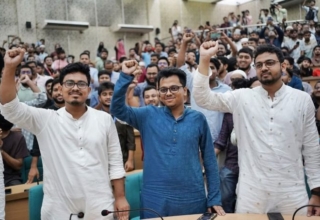
After more than five years of its announcement on January 26, 2015, the National Education Policy 2020 was approved by the Government on July 29, 2020, which ended not only a long wait for culmination of policy making process, but a lot of speculations as well.
From 484-page draft to a 66-page policy document, the expectations from the policy proposals and their scrutiny have certainly begun on the right earnest. A division of opinion has already started appearing with one set of people quite excited about long due reforms that have been signaled by the NEP 2020. The other set of opinion is clearly not enthused and feels the opportunity that this policy offered after 34 years, hasn’t been utilized by the committee.
As the ideological divide has never been as pronounced as in recent years in society, left leaning liberals—the traditional influencer on matters of public policy, were seemingly kept out of the consultation process and going by the admission of the drafting committee chairman, the right wing was heard several times to their satisfaction. Therefore, instead of being based on an all-inclusive consultation process, it has somewhat lopsided and may have lost on valuable input of some well meaning indigenous and long standing educational policy experts.
Indeed 34 years since the last national policy was announced is a long period and going by the revolutionary & disruptive technological advancements and their profound impact on economy and society, it was necessary to effect the corresponding change in the education apparatus, the bedrock of the economic and social advancement. And to a great extent the NEP 2020 has captured the gaps and also laid down the reforms roadmap. Even the most ardent critics do concede that the new policy has threadbare gone into all challenges of education process, drawbacks of existing system and opportunities that can be created by way of reforms and restructuring eventually to create a vibrant education ecosystem.
The debate around NEP 2020 is here to stay for not only months but for several coming years and the greatest satisfaction for every Indian must be that education is now a national narrative and its significance widely recognized.
While the revealing of NEP 2020 has done a great deal for bringing education to mainstream discourse, yet it has also raised many questions of not been in sync with need and reality. When the Right to Education Act, 2009 was debated, passed unanimously and notified in 2010, it was hailed as a legislation of a century, which will make the fundamental right of education for every child a reality and schools the most child friendly spaces. After a decade, caught in implementation impracticalities, bureaucratic mesh and resource crunch, many people both in establishment and outside think it is a passé. Instead of a review, the game has been changed to learning outcomes.
A similar fate may await NEP 2020 implementation if it is not broken up to actions plans, decentralized to district education plans like disaster plan and consistently worked on for building systemic capacities and capabilities. In coming time, it may also have to come clear on certain key questions like opaque privatizations, state-centre conflicts, public provisioning, and children rights.










